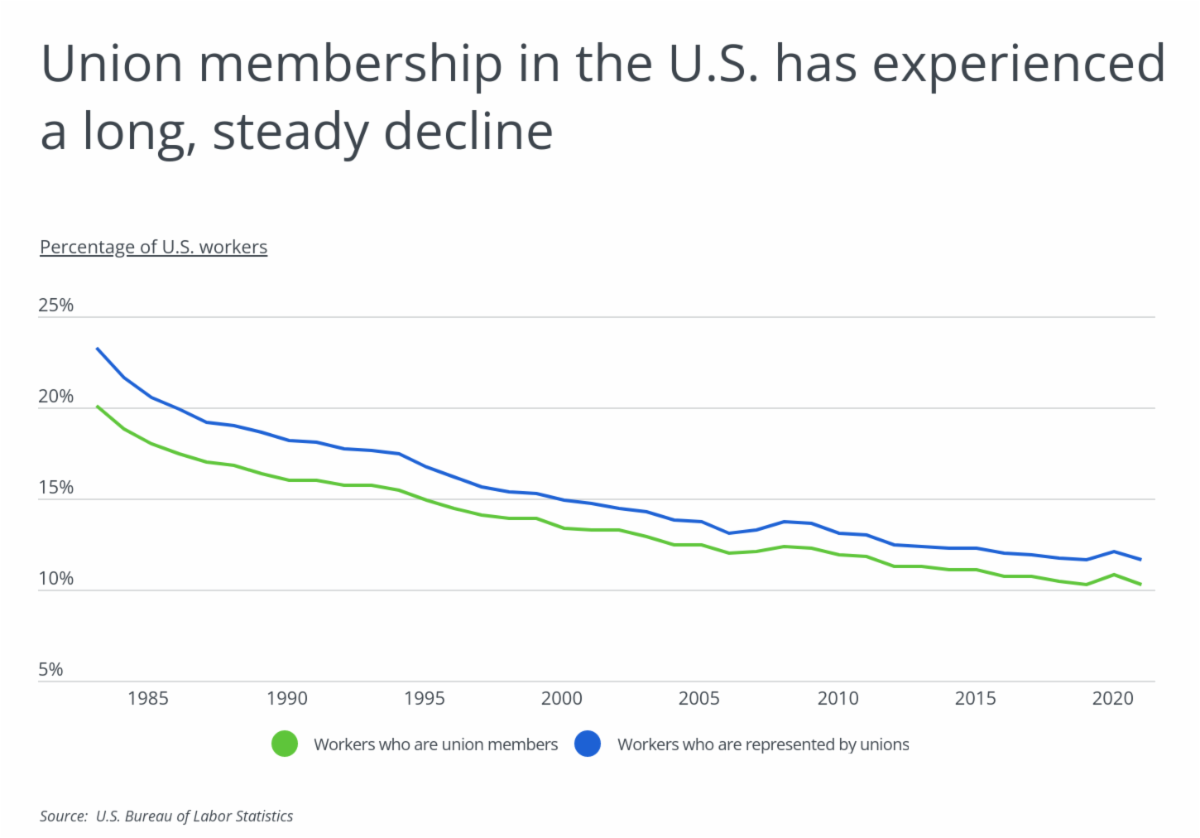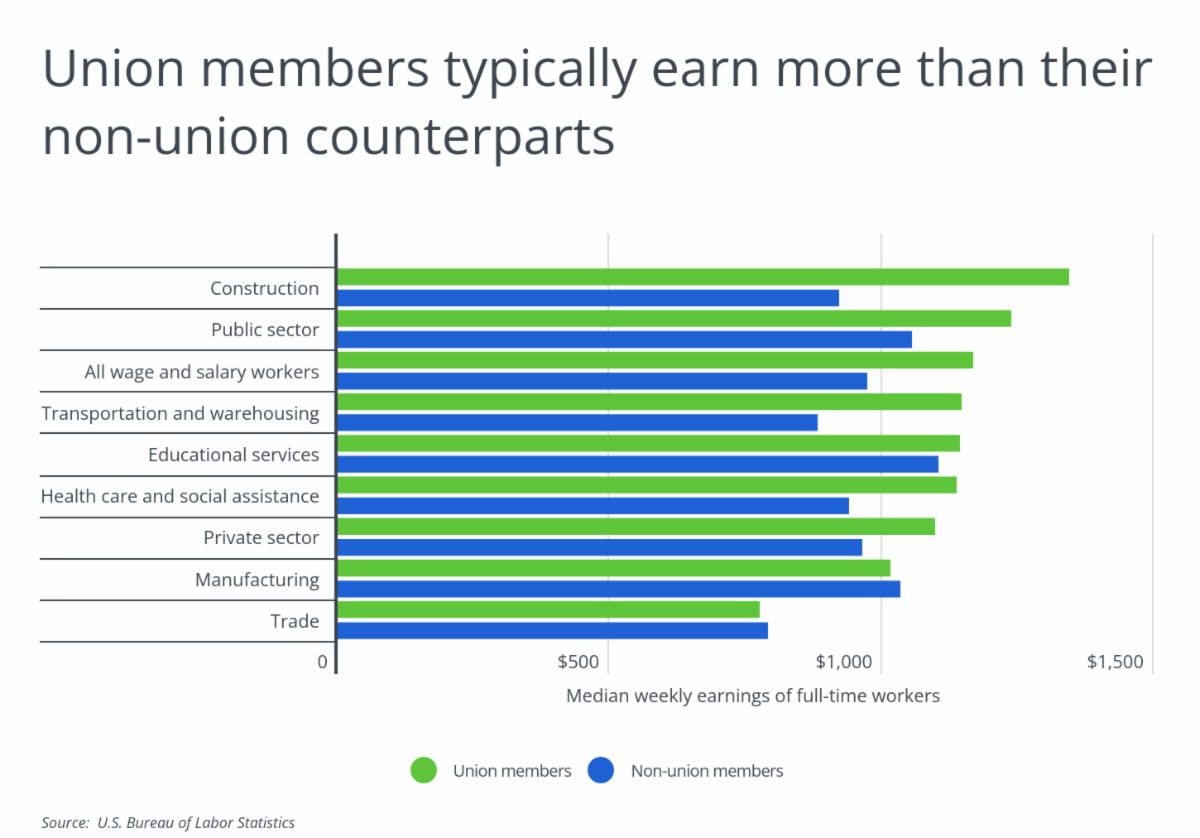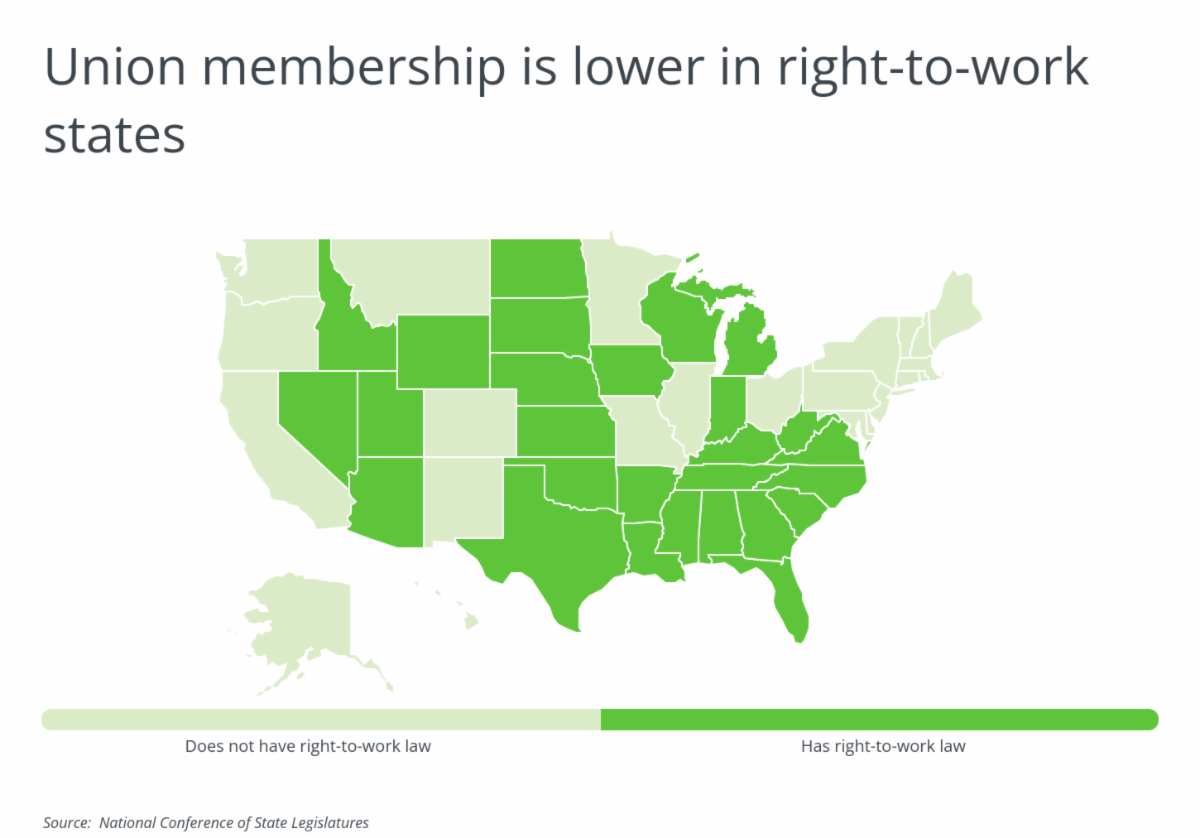Georgia Has the 9th Lowest Union Participation Rate in the U.S.
Thursday, July 14th, 2022
The U.S. economy today in some ways offers the most favorable conditions workers have had in years. The unemployment rate is as low as it has been in two decades, having bounced back from a COVID-induced spike in 2020. Simultaneously, the wave of quits and job switches now known as the Great Resignation shows that workers are on the hunt for better jobs. To recruit and retain employees in a tight labor market, employers are raising wages and offering better benefits and flexible working arrangements.
Amid these labor-friendly conditions, another historic source of worker power may be making a comeback: unions. Recent union drives at major U.S. employers like Starbucks and Amazon have grabbed headlines, and Congress is currently considering the PRO Act, a major piece of legislation to strengthen unions. But support for unions is more widespread than that. A majority of Americans believe that declines in union membership have been bad for the country, and according to the National Labor Relations Board, petitions for union elections nationwide rose by 57% from 2021 to 2022.
While labor organizing appears to be on the rise again, unions have a ways to go to reverse the long-running decline in unionization of recent decades. Forty years ago, one in five U.S. workers (20.1%) was a union member, but today, that figure is approximately one in ten (10.3%).
 Experts point to a number of factors for the decline of unions in the U.S. The rise of right-to-work laws and other beginning in the middle of the 20th century allowed more employers to hire non-union workers. The economic downturn of the late 1970s and early 1980s led to major layoffs for many heavily unionized employers and industries. Globalization has made it easier for employers to find less expensive labor outside of the U.S., while technological advancements have allowed certain professions to be more automated. The impact of these factors has been experienced differently across sectors of the economy. Industries like transportation and warehousing, manufacturing, construction, and trade have seen the sharpest declines in union membership rate over the last two decades. These are industries that have been reshaped by the major economic and social trends that have contributed to decreases in union participation. In contrast, fields like education and health care have experienced more measured declines.
|





